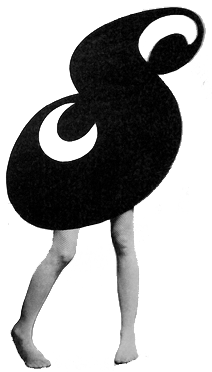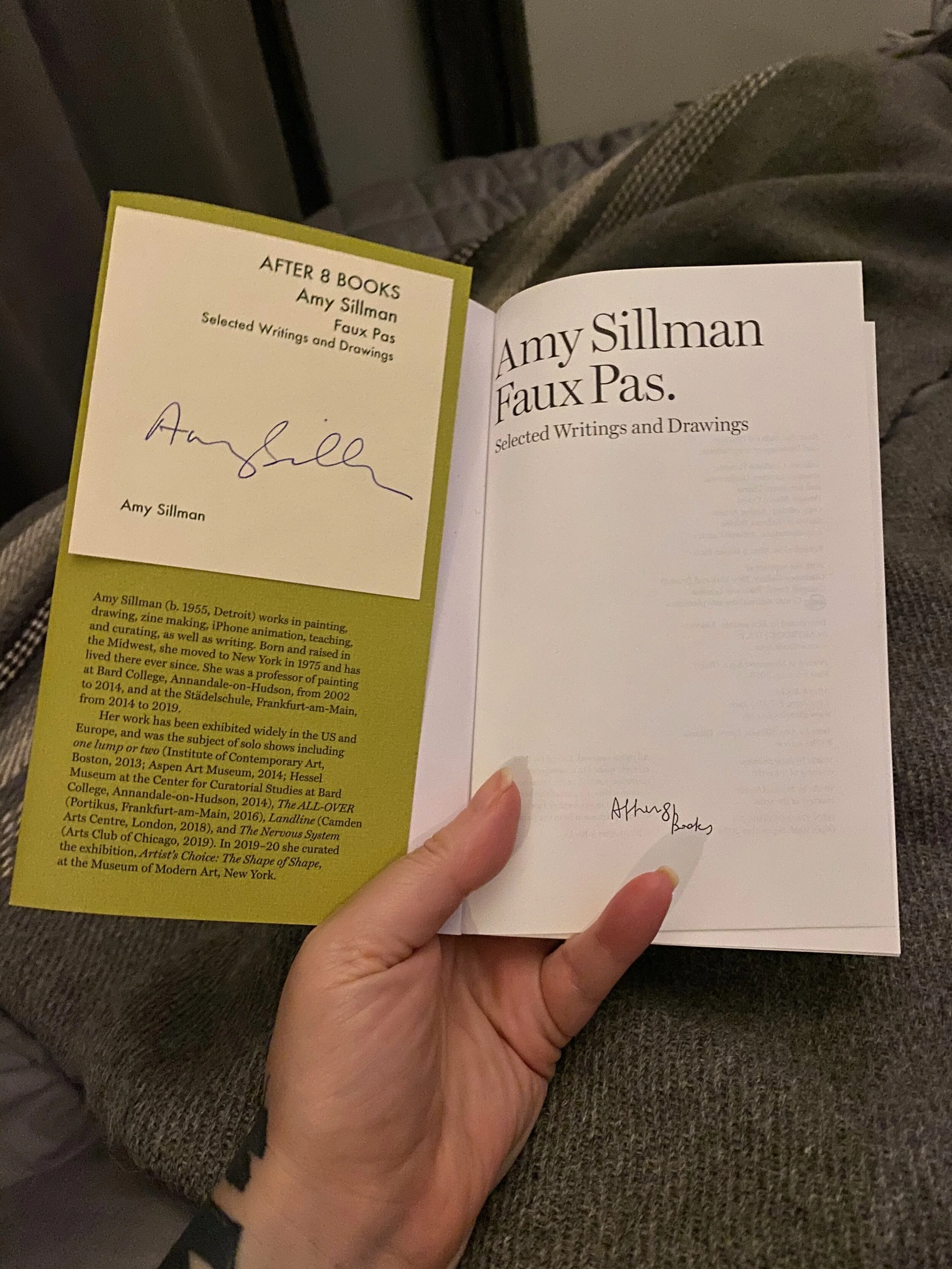Late night reading, after nap faux pas
I accidentally took a two hour nap at 8 o’clock at night, which doesn’t seem like a good idea, especially in light of that back-of-my-mind nagging (maybe Puritanical?) feeling I that I should really get serious about regulating my sleep schedule.
It mostly poured rain today in DTLA and the light coming in from the big windows in my loft was gray from the moment I woke up. My energy level seemed to follow the darkening of the sky. At 2:30 I was convinced it must be like 7:30. My drowsiness got its lulling wish shortly after I cuddled up in bed to watch a little comfort tv on my laptop. Weighted blankets and Mad Men reruns are the best. Anyway. now I’m wide-awake.
Instead turning back to laptop viewing I grabbed a book I’ve been slowly reading and looking at over the last few weeks: Faux Pas. Selected Writing and Drawings, by Amy Sillman. It’s a terrific, smart little volume. I pre-ordered a signed copy from artbook (Amazon has taken enough of my money this year).
The cover has a quirky sweetness to it—and the Chartreuse colored paper has a wonderful feel.
Signed! And I love it when a book has a big flap that you can use as a book mark.
Just after the title page, before the TOC, the book gets right to it with two timely drawings depicting our current moment of quarantine, loneliness, frustration, bad decision-making, terrible hair, etc.
Relatable: Netflix and feakout..
Relatable: There are no cosmetics. There is no conditioner. There is only bean soup.
I’m currently reading a conversational interview with Sillman and the book’s three editors. A few quotes have struck me:
Discussing the idea of “fail better” and art-world recognition. “Engage in willful opacity. But that’s only possible when there is a genuine idea of a sub-culture, an an idea of an outside.”
On creating zines to accompany her exhibitions: “Anti-pomposity is an extremely important principle for me.”
On texts in the drawings and zines: “I don’t like easy, dumb attitudes….there’s a high-low, an informal openness at work here. I polish my texts intensely—I spend a lot of time fussing over the vocabulary—but I want them to look easy, straightforward, earnest, even dumb.”
Of course I love it that Sillman makes zines. I completely agree with the methodology too—both the seriousness of their creation and the casualness of their presentation.
I’m looking forward to continuing on to the essays, which include discussing individual artists and singular works (Chamberlain, Lassnig, Dunham), notes on awkwardness, and symbols in her work, amongst other topics.
Anyway, with that big nap I may just finish the book. Happy reading.




